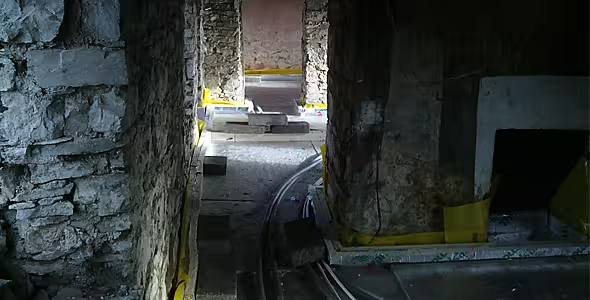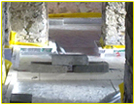
Getting out of the ground is a milestone that marks the beginning of the end. I have four part blog sequence that outline the process preparing and installing a concrete slab into an old building. Have you done this before? Feel free to share your experiences and any tips.
- A Good Solid Base; Preparing the sub floor,
- Getting a Good Seal; Damp Proof Membrane (DPM), Radon Barrier and Insulation,
- Start as you Mean to End; Installing Mechanical and Electrical Services.
- On solid Ground; Project management and Pouring the Slab.
Project managing the process
You can never be too organised. Set out a plan and program for your works and review it daily. Check the material order sequence is streamlined, you don’t want to be double moving materials or have them in the way. While you may need to order in bulk to get a discount, see if you can stagger deliveries or store the materials in well considered places on site. If you see you programme slipping check and delay premature material orders.
Have some back up labour, but don’t rely on friends or family. This is hard work and if they are not used to it you will spend your time having cups of tea and chats and get no work done. It is better to pay someone and know they will be there and get the job done.
Choosing Concrete
The environment pays a heavy toll in the production of ordinary Portland cement concrete. For a more environmentally friendly option you can use low carbon concrete which uses GGBS "Ground Granulated Blast Furnace Slag". GGBS is a waste product of the steel industry and similar in chemical composition of OPC (ordinary Portland cement). GGBS still has a high carbon footprint, however as it is a bi-product and hence recycled it is argued that its reuse reduces the carbon footprint of concrete. Low carbon concrete is mostly the norm these days; it’s the same cost and easily sourced.
I have heard of some people using lime-crete or hemp-crete concrete. It is an ecological alternative to concrete and as it breathes it requires no DPM. There are only a few people supplying limecrete in Ireland and it is not the norm. It is likely you may need to mix it yourself on the job and this is time consuming for big pour. It is vital to pour limecrete in a period of no frost, limecrete takes up to 96 days to cure fully as opposed to concrete which takes 28 days. You will need to leave it 10 days before you can work on the surface.
Make sure to watch the weather forecast if you’re pouring concrete. Avoid a wet day as the added water from rain will weaken the concrete mix and may lead to cracking. Also avoid frosty nights as it slows the concretes setting time and disrupts the reaction which can lead to cracks. It is handy to have some plastic sheeting on hand to protect the concrete if required.
Pouring concrete
Once you have installed the insulation you will be able to measure the amount of concrete you need. In the old days, the concrete truck put a little extra in the truck, nowadays they are very accurate and waste nothing. If you over order they will look to dump the rest somewhere on your site. One idea is to have a few jobs set up where you can use any extra concrete, like garden steps etc. I was lucky on my house and was left with only one bucket over!
When pouring concrete, you will need at least three pointed spades, one rake, and many tough backs. It is quick work so many hands make light work. I also use a 4x2 inch piece of wood the length of each room. With a person at each end you can vibrate the concrete; going across the room a few times each way with a wet pour of concrete you can get a good level. A piece of wood in a T shape is also useful to spread and vibrate the concrete. A good trowel is also hand for corners and fireplaces that are awkward.
Take care to protect any pipe work and pipe work insulation installed in the slab. Use a few blocks to hold the pipes down and if you are using steel in your floor slab tie the pipes to the steel work.
Take care when using concrete
Concrete is made of lime and is dangerous; I know this from first hand as I foolishly kneeled in it for a few minutes some years ago and burnt my kneecaps off. Wear heavy thick clothes, wellies with thick socks, gloves and watch out for concrete slipping down your wellie leg. Wear protective glasses to protect you from splashes into your eyes if you’re working near the tucks funnel. Have a 5 litre bottle of water handy so you can wash your eyes out if you need to. If you do get burnt seek medical assistance urgently, if you think it’s minor I found Aloe Vera gel to be really soothing.
Stay tuned to my next blog sequence where I will be installing a new airtight natural slate roof.
Useful Links








